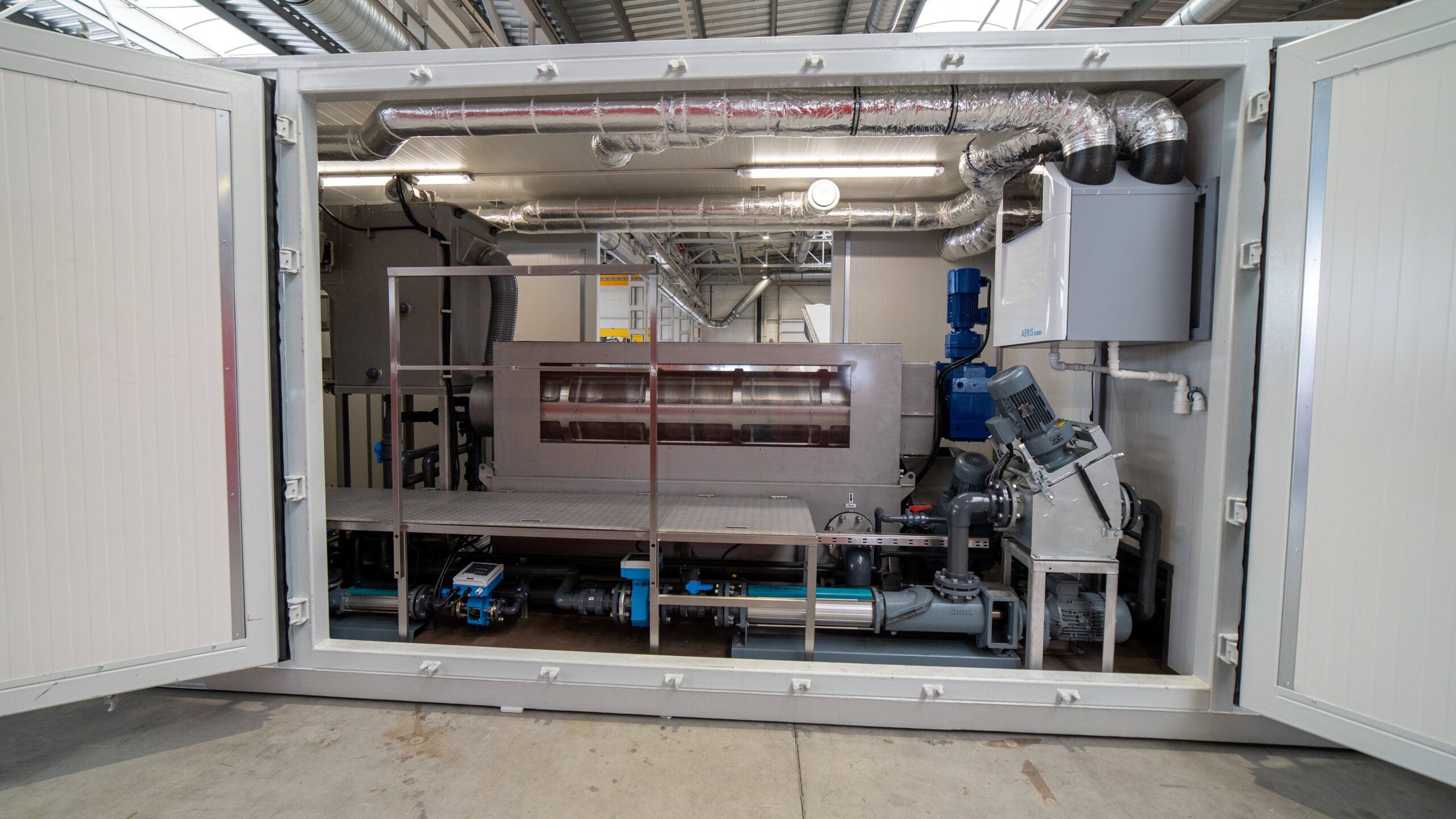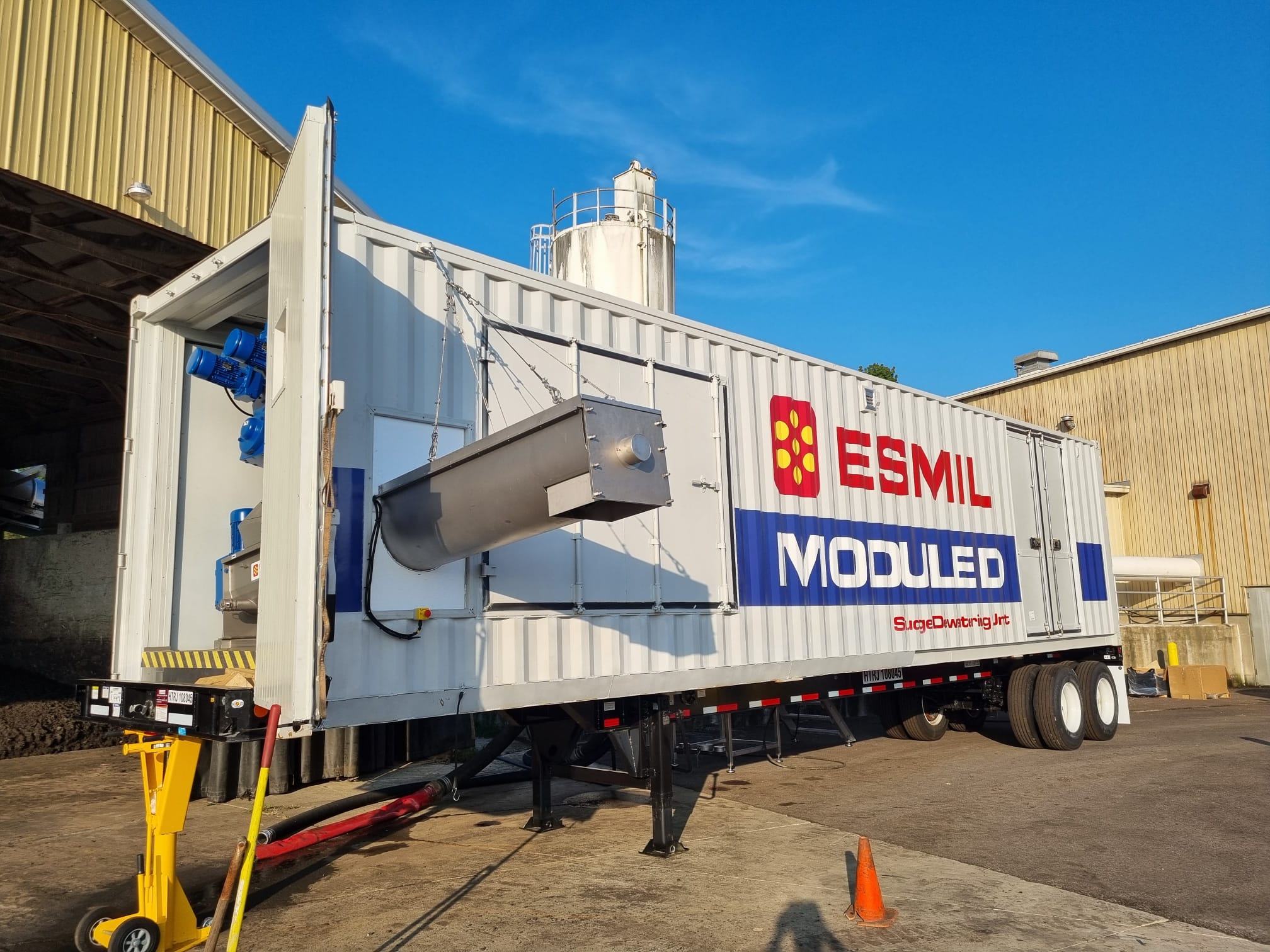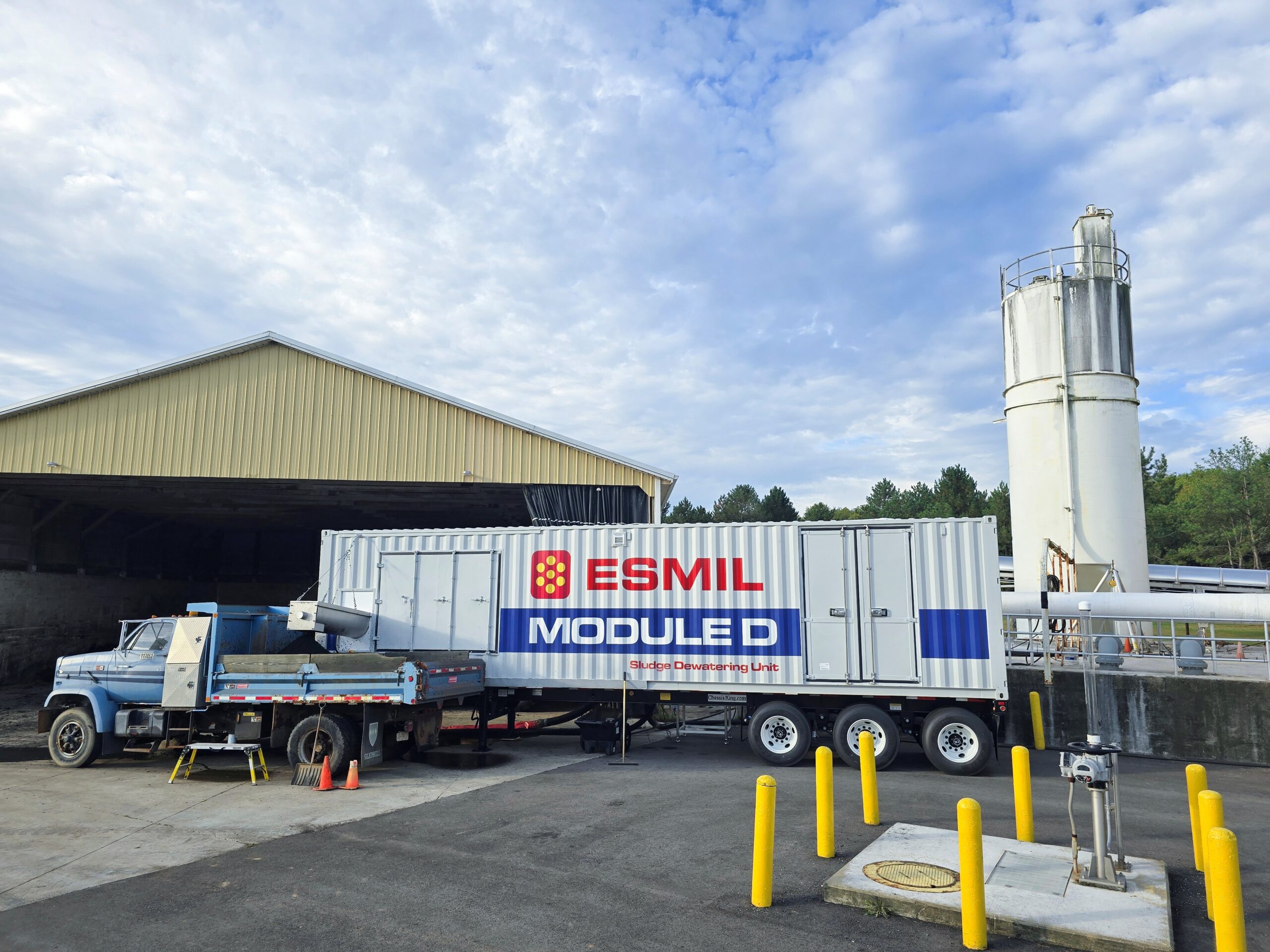One of the buildings at the wastewater treatment plant in Barberton (Ohio, United States), where the sludge dewatering process was conducted, suffered severe structural deterioration. A comprehensive renovation was necessary, which required temporarily shutting down the facility and thus threatened the continuity of the technological process. How was it possible to maintain uninterrupted operation of the plant despite losing access to the stationary dewatering system? The solution was the mobile, containerized Esmil Module D sludge dewatering unit.
History of the Barberton Wastewater Treatment Plant
The average capacity of the Barberton wastewater treatment plant is 23,000 m³/day, with a maximum design capacity of 45,425 m³/day. For many years, two belt presses were used in the sludge dewatering building. However, in response to the need to increase the efficiency of this process, a decision was made to replace them with a modern four-drum multi-disc screw press MDQ-404CL manufactured by Esmil.
The system operates intensively, up to seven days a week, regularly processing over 20 m³ of sludge per hour with an initial dry solids content of 3%. As a result, it produces up to 612 kg of dry solids per hour, forming a sludge cake with a final dry solids content ranging from 23% to 25%.
After years of intensive use under harsh conditions, the building suffered severe corrosion and structural damage. Due to the extent of the damage, renovation was not an option – the only solution was complete demolition and construction of a new facility. The estimated duration of this project was six to eight months, which would require shutting down the building and suspending the sludge dewatering process for a long period. The plant could not afford such a break, so urgent searches began for a temporary solution that would maintain continuity of the technological process.
Challenge: Maintaining sludge dewatering process continuity without access to infrastructure
The Barberton wastewater treatment plant faced a serious challenge – how to handle the daily inflow of sludge from the primary clarifiers without access to the equipment located in the building under renovation? A downtime in the dewatering process would mean costly transportation of liquid sludge, resulting in a drastic increase in operational expenses.
Esmil Solution: Mobile Sludge Dewatering Unit Module D
Fortunately, just 30 km from the Barberton plant is the U.S. branch of Esmil Group. The plant contacted us at the perfect time – at the Esmil production facility, a new mobile sludge dewatering unit, Module D, was being finalized and soon ready for field deployment.
The Esmil Module D is a complete, fully operational dewatering station housed in a specially modified 40-foot container. Its design was carefully developed for rapid deployment and ease of use in any field conditions. The unit only requires connection to water, power, and sludge feed.
Equipment of the Esmil Module D Mobile Dewatering Unit:
- Three-drum multi-disc screw press Esmil MDQ-503 CL
- Polymer dosing system with built-in tank
- Macerator, sludge pump, flow meter
- Screw conveyor for transporting the sludge cake
Complete operator station, HVAC system, and emergency lighting

The system was designed to match or even exceed the performance of the press previously used on-site. Rapid implementation, minimal operator involvement, and stable operation – this was exactly what the Barberton plant needed.
Implementation results
The quick response from Esmil specialists allowed the Barberton wastewater treatment plant to avoid downtime caused by intensive construction work and the renovation of the dewatering building. The deployment of the containerized Esmil Module D sludge dewatering unit went smoothly and without issues, and the results confirmed its effectiveness in dewatering and the quality of the sludge cake.
Results:
- Ensured continuity of the dewatering process
- Stable, high dry solids content in the dewatered cake (23–25% DS)
- Low polymer consumption
- Reduced staffing requirements

Summary
The history of the Barberton wastewater treatment plant demonstrates that a well-chosen mobile solution can effectively ensure continuity of the technological process, even in the face of serious infrastructure challenges. Instead of costly downtime and logistical complications, the plant received a ready-to-use, high-performance solution that took over the functions of the stationary dewatering system almost immediately.
For treatment plants facing challenges such as breakdowns, upgrades, or increasing operational demands, mobile sludge dewatering systems like the Esmil Module D can become a key element of an operational continuity strategy.







